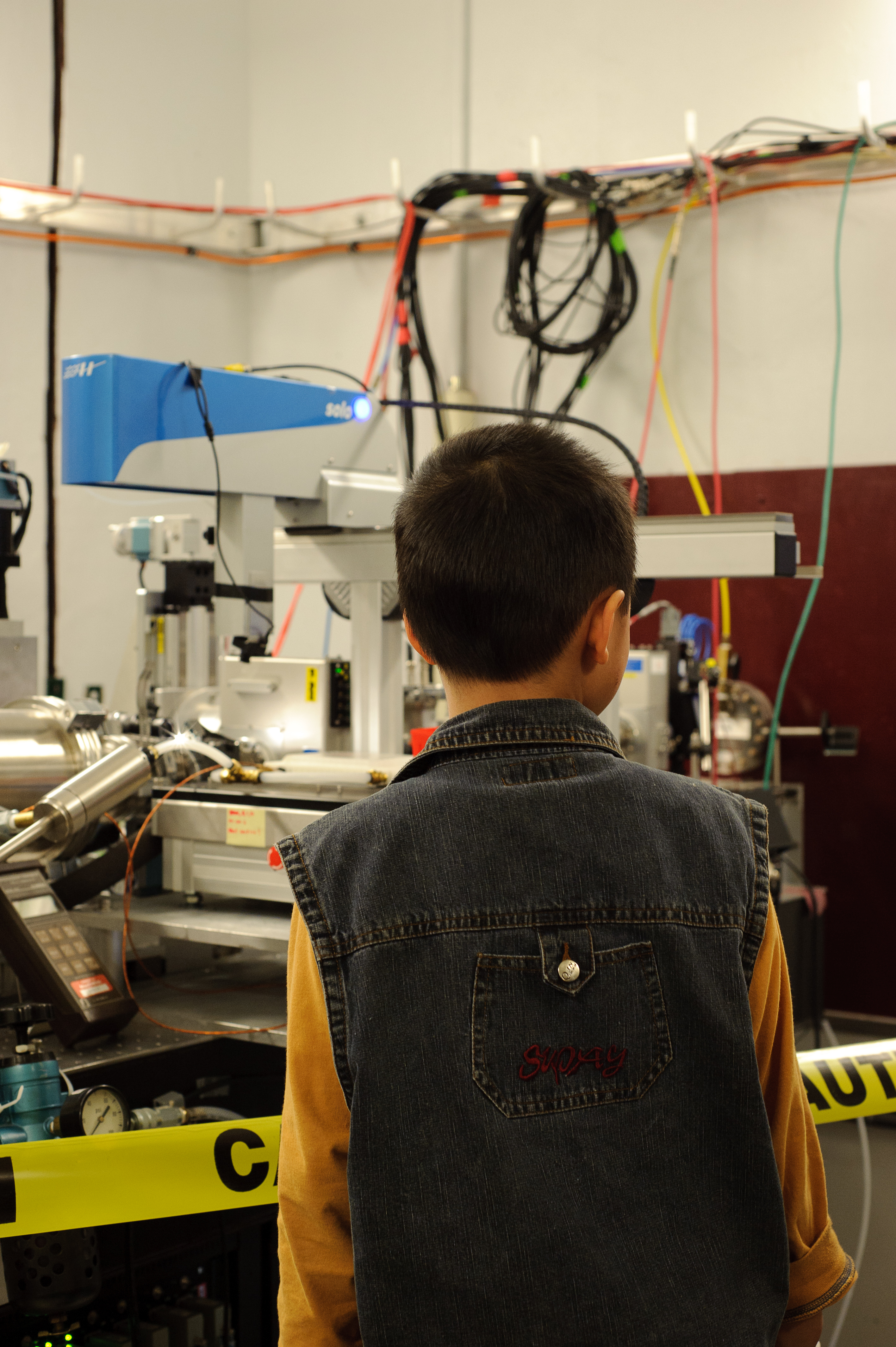X-RAY RUNS: Apply for Beamtime
2017 Nov 1 - Dec 21
2018 Feb 7 - Apr 3
2018 Proposal/BTR deadline: 12/1/17
2018 Apr 11 - Jun 4
2018 Proposal/BTR deadline: 2/1/18
During the first weekend of April this year, Cornell Laboratory for Accelerator-Based Sciences and Education (CLASSE) teamed up with the Sciencenter and NISE Network to invite everyday people to take a look at everyday things in a different light. Literally. X-rays at Cornell’s Wilson Laboratory, with wavelengths ranging from .01 to 10 nanometers, illuminate a world that defies our concept of space, time, and matter.
On Saturday April 2, over 700 visitors swarmed the Sciencenter, a hands-on science museum in Ithaca NY, where admission fees were waved and exhibits were expanded as part of the NISEnet’s effort to introduce the public to the tiny world and exploding technology of nanoscience. The Sciencenter’s 70 volunteers, recruited from the surrounding Ithaca community, Cornell University and Ithaca College teamed up to provide guests with a variety of educational materials, hands-on activities and fun-filled demonstrations developed by the NISE Network. Wilson Laboratory’s scientist Dr. Ernest Fontes enthralled a diverse audience of children and adults with a short presentation entitled “X-Ray Secrets”, explaining to visitors how x-rays can render otherwise invisible objects visible. Following the presentation, Dr. Fontes encouraged audience members to “paint” with fluorescing detergent, illuminate objects using a light box, and create intricate diffraction patterns using laser light and small openings.

(photo: courtesy of the Sciencenter)
Fifty Cornell scientists, technicians, and students volunteered to make sure “NanoDay at Wilson Lab” would be an eye-opening science adventure for all 300 guests who came through our doors on Sunday April 3. Visitors were invited underground to explore the complex labyrinth of massive equipment that accelerate and maintain the high speed charged particles that create our powerful x-rays. Only miles from home, locals journeyed past magnets bigger than cars, pipes the size of submarines, and intricate systems of valves, wires, blinking lights, knobs, and switches. They even caught a rare glimpse behind the scenes—behind lead walls—at the precision optics and stages that world-class scientists use to focus structures and phenomena at 1/100,000th the thickness of a hair.
At the nanometer level, familiar things don’t behave in a familiar way. Clear things become rainbow-colored, dry things stay dry even if submerged under water, smooth things become sticky, light through irregular materials shines out the other side in beautiful ordered patterns, and water behaves as though it were made of thick molasses.
After the tour visitors were given a chance to experience applications and effects of these nanoscale phenomena directly. Kids and their parents assembled Platonic geometric shapes—models of common molecules. They used soap solution to create minimal surfaces in thin films. These films, like visible light only hundreds of nanometers thick, revealed all the colors of the spectrum.
If our guests hadn’t already learned by this point that things aren’t as they seem, couples placed their precious jewelry into a special chamber, the XRF. In this machine incident x-rays excite samples to emit their electromagnetic signature based on what elements they contain. Finding copper in that “gold” ring illustrates how there are likely many other unknowns yet to discover.
After wandering down the long G-Line hallway, observers found out how fluids behave in the wacky world of things tiny. Three drops of food coloring, red, blue, and green, were stirred up into a murky brownish mixture only to be unstirred back again into the same three distinct drops.
Participants were in disbelief to discover that high-energy particles, created by cosmic rays from outer space, travel unimpeded through their bodies day and night like a rain shower of nano-bullets. They were awestruck to witness for themselves the tiny lightning bolts, ionized tracer trails, created by these particles as they zoomed through right before their eyes.
Young, old, or in-between, NanoDay open house at Wilson Lab unveiled for Cornell’s neighbors an otherwise invisible world—a world that is still unfolding before our scientists here daily. It was a pleasure for us to share with the community how things look when viewed in a different light.

(photo: courtesy of the Sciencenter)
Submitted by: Lora Hine, CLASSE, Cornell University
